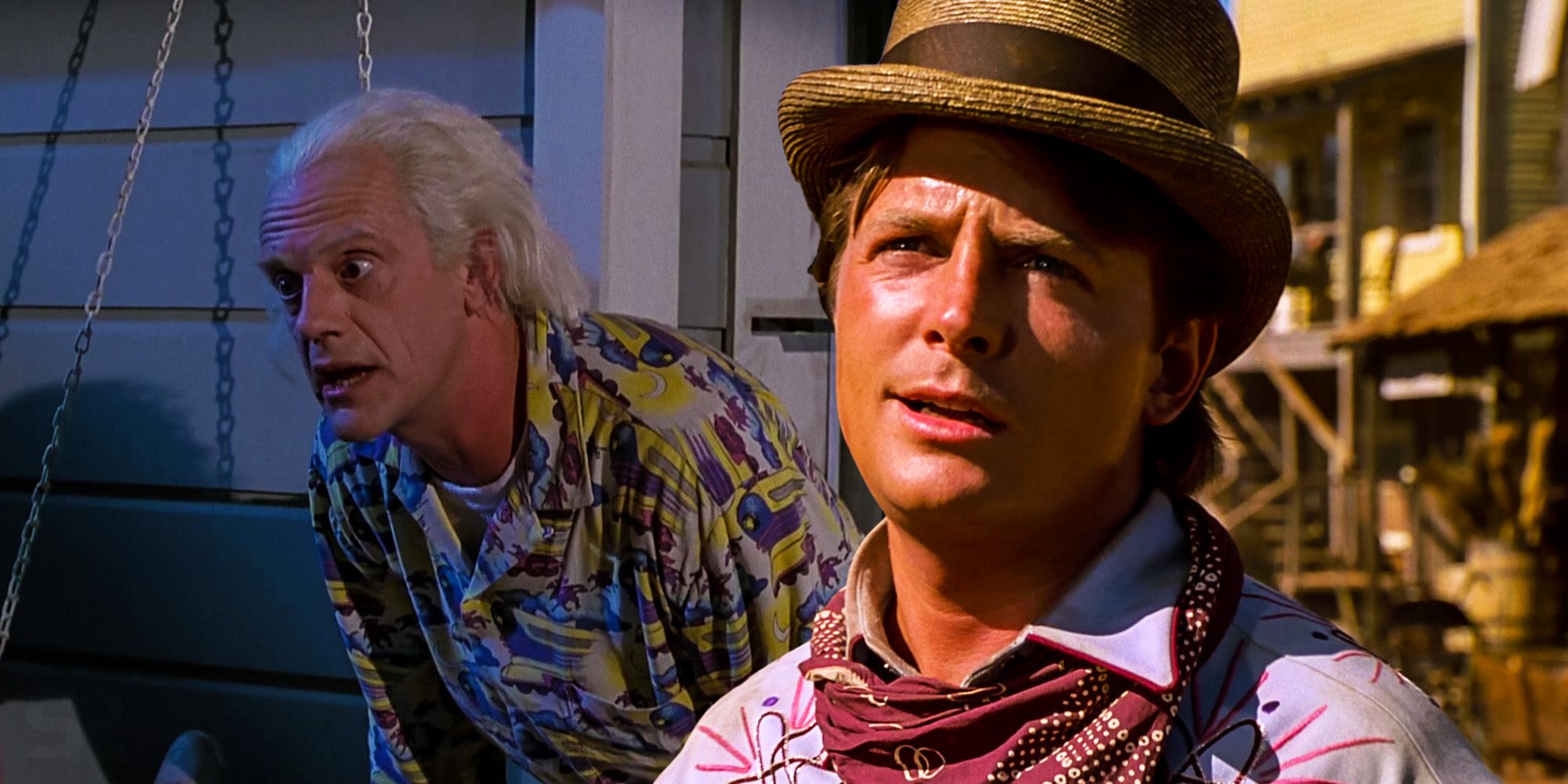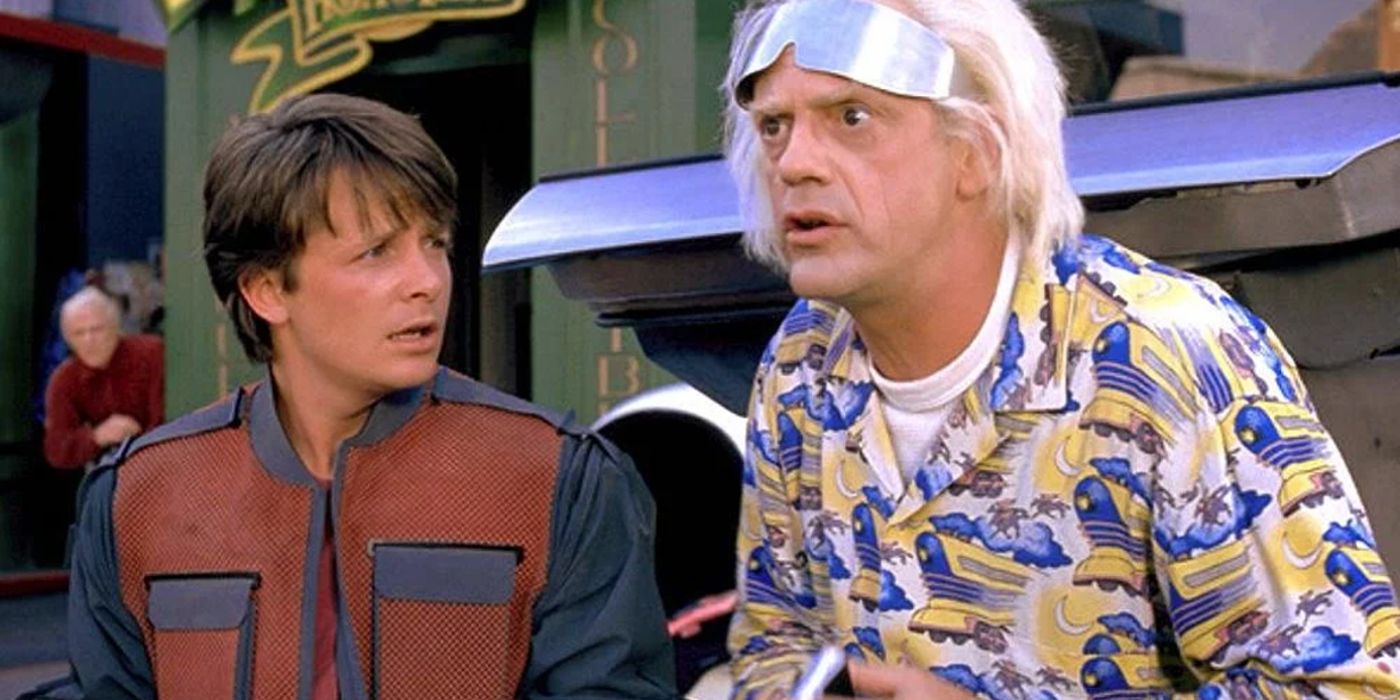A minor detail in Back to the Future Part II adds a secret meta-layer to the franchise through subtle foreshadowing. Back to the Future is one of the most beloved sci-fi franchises of all time, thanks in no small part to its timeless, enjoyable, time-traveling narratives. The first film, Back to the Future, was released in 1985, with Part II then released in 1989 and Part III in 1990. The trilogy of films follows Marty McFly (Michael J. Fox) and Doctor Emmett "Doc" Brown (Christopher Lloyd) after the latter invents a means of traveling through time.
The Back to the Future trilogy is filled with Easter eggs, clever references to past films, and subtle foreshadowing of future events. Though Back to the Future Part II's mixed reviews initially claimed it wasn't as good as the first film, it did offer several excellent moments that enrich the entire trilogy. One such easy-to-miss moment is Doc Brown's shirt, which features men riding horses chasing after trains. It's a strange design for a shirt, but it actually subtly foreshadows the ending of Back to the Future Part III, in which Doc and Marty chase down and hijack a train on horseback.
By setting up the ending of the third film in something as subtle as a pattern on a shirt, Back to the Future's story takes on a different aspect. The idea that such nuanced foreshadowing appears within the franchise is particularly interesting, as it contradicts one of the driving themes behind the trilogy's overall story. In fact, what may seem like a minor Back to the Future Easter egg actually repaints the narrative in a decidedly meta fashion by hinting that its world is subject to laws of determinism.
Doc Brown's Shirt Predicting The Future Makes Back To The Future Better
Back to the Future's use of time travel as a plot device is kept relatively straightforward throughout the trilogy, with Doc Brown simplifying the more complex issues in terms that Marty (and the audience) can better understand. However, the use of cause and effect as a plot device is consistent throughout all three movies, with characters' actions deciding their futures (or pasts, in some cases). In fact, Doc's shirt in Back to the Future Part II is possibly the only example of predetermined events - as that's the only real explanation for the foreshadowing provided by the shirt.
In this way, the shirt is a hint from the writers about what Back to the Future's ending would entail, and it's hidden in plain sight - right under the characters' noses, in fact. The shirt also appeared in Back to the Future Part III, repurposed as Doc Brown's bandana, proving its design was deliberate. This, in turn, proves that there was a grand plan for the overarching narrative of the trilogy from the beginning, but the nature of Back to the Future's story makes the idea of foreshadowing take on a different meaning as well.
As Back to the Future's story hops back and forth across its franchise timeline, and, as such, the laws of time and space seem to bend to fit the trilogy's narrative. Doc's shirt referencing events that have yet to happen feels like a meta nod to this very idea, establishing a link to the events of the character's future. As Back to the Future Part II made many predictions about the future (it even hilariously predicted Jaws 19 for a 2015 release), the one easy-to-miss prediction that came true being hidden in plain sight is an excellent meta-joke that only gets better with age.


